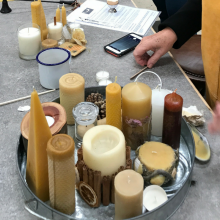The leather workshop has particular provisions for leather manufacturing and to fulfil the requirements needed by their customers.
Is there repairing of leather is possible apart from manufacturing?

Yes, apart from manufacturing it is possible to repair the old leather products such as bags, belts, jackets, and shoes.
What are all the tools used in leather manufacturing and they are used for?
Knife –it is used to cut the edges of the leather.
Punching iron – it is used for making holes in the leather strap.
Marking silver pen – it is used to mark the cutting edges at the leather straps to peel it off.
Types of the leather manufacturing process are
- Tanning
- Crusting
- Preparatory
In this three sub-process, there would be neglected some sub-process for certain types of leather.
The stages of the preparatory are
- Soaking –in this process rehydration and washing purpose are reintroduced
- Preservation – the skin or hide is tempered with the method which transposes it transitorily.
- Liming – opening up and waste proteins are achieved.
- Fleshing -hypodermic materials are removed.
- Unhairing -major hairs would be removed.
- Splitting –the skin or hide is separated into double or many horizontal strata.
- deliming – the unhairing and liming chemicals were removed in the pelt.
- Relining –the skin or hide is treated for achieving many protein removals or many opening ups.
- Bating –to remove the nurture proteins proteolytic enzyme proteins were introduced.
- Freezing –the meaty layer of the skin is removed in the physical process.
- Degreasing- natural oils or fats were stripped from the skin or hide
- Pickling –lowers the pH value and leads to acidic region.
- Bleaching –used to modify dark-coloured pelt to light-coloured pelt.
- Depickling –raising the acidic region to the penetration of tanning agents.
The stages of crusting are
- Sammy- Forty-five – fifty-five percentage of water is taken out of the leather.
- Wetting back- rehydration of the semi-processed leather.
- Shaving- used to peel off the leather fibres.
- Splitting- separate the leather into single or many horizontal strata.
- Neutralization- the value of pH is adjusted between four and five-tenths to six and five-tenths.
- Dyeing- colouring process occurs.
- Retaining- more tanning agents were added.
- Fatliquoring – waxes and oils or fats were attached to leather fibres.
- Stuffing- waxes and oils or fats were added to leather fibres.
- Filling- the chemicals which help the leather harden were added.
- Stripping –tannins removed were fixed.
- Fixation –all the unbound chemicals were trapped or removed out in the leather.
- Whitening- used to colour the leather.
- Setting –grain flatness, area was imparted and the excess amount of water is removed
- Conditioning- 18 to 28 % of water content is added on to the leather.
- Drying- the moisture level of the leather gets dried.
- Buffing- scraping of the facet side of the leather is to reduce grain defects.
- Softening- softening of leather by physical separation of leather fibre
Tanning process
It converts the skin or hides into a stable material. There were a huge number of tanning materials and methods. The most commonly used tanning materials are leaves of leather and chromium.
